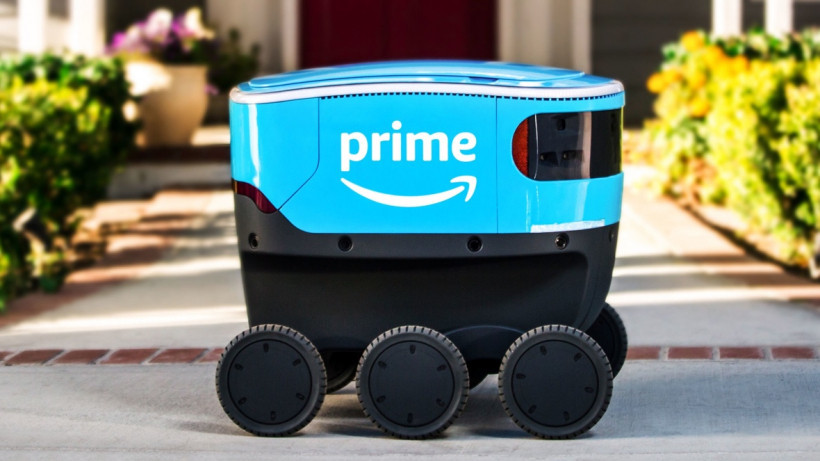What happens when we give Alexa legs?
“Maybe someday when robots are way more advanced than today, and everyone has them in their homes, you can tell yours that I said hello.” These were the last words of home robot Jibo, which went offline earlier this year.
Despite predictions Jibo could usher in a new era of social robots with updates, voice commands and an adorable design, its servers were shut down in March.
Jibo is just one of many robots built for the home that didn’t even make it to your front door. There are many reasons why, including that, as cool as they may sound, robots are a risky proposition – especially as they’re eye-wateringly expensive.
Guide: Roborock robot vacuum cleaners compared
Yet if you believe the rumors, Amazon could be working on a home robot that could house its Alexa virtual assistant. Which begs the question, will Alexa have what it takes to finally welcome robots into your home? And if so, will it finally usher in the age of the social house bot?

The rise of the smart speaker
Thanks to Alexa, as well as Google Assistant and Apple’s Siri, AI voice assistants have become ubiquitous. The latest stats suggest US smart speaker owners grew 40% over 2018 and reached 66.4 million – that’s 26.2% of the US population. It’s a similar story in the UK with 22% of households now owning one.
The capabilities of voice assistants are improving each day. They’re becoming better at recognizing different voices, developing the ability for more natural dialogue and understanding, with their role in your home all the more vital with every update.
But what’s the next step for their design? Rohit Prasad, the vice president and head scientist at Alexa Artificial Intelligence, has said that he thinks Alexa could be smarter if it had a robot body and cameras so it could move around.
“The only way to make smart assistants really smart is to give it eyes and let it explore the world,” said Prasad at the MIT Technology Review’s EmTech Digital AI conference in San Francisco.
His comments mirrored a Bloomberg report from last year, which suggested that Amazon was working on a project codenamed Vesta, believed to be focused on creating domestic robots.

Meet the cute home robots that want to love you
Robots built to navigate their way round your home aren’t new. Domestic robots, care robots and robot pets have been around in various guises since the 1980s.
Right now there’s a huge range available to buy and in development, including those designed to look and act like your pets; recognizing your face and following it as you move around the room, like Zoetic’s Kiki. Others use sensors and signals to respond to your voice and touch, like Sony’s Aibo robo-dog (pictured above), and many have their own built-in, Alexa-style assistant to help you check the weather, send messages and more.
Give it eyes and let it explore the world
But the battle for your smart home has been tough. Jibo is the most recent example of a home robot that was canned, but other companies have also shuttered operations.
The cute robot with a camera, Kuri, never made it to market. And, despite significant financial backing, Anki called time on its Cozmo and Vector robots earlier this year, which looked like toy diggers and could interact with people and their surroundings.
These companies were tipped to lead the way in terms of home robots – so what went wrong?
“There are some basic economic reasons,” Dr Beth Singler, an artificial intelligence researcher at Cambridge University, tells The Ambient. “A lot of people aren’t going to be able to drop nearly a thousand dollars on a service that they might only use for pretty simple tasks at the moment, like asking for music to be played or checking the weather forecast.
“And a lot of the advanced features of domestic robots, like Jibo’s facial recognition, haven’t really proven their worth to a wide consumer base.”
Read this: Anki reminds us that saying goodbye to robots is hard
Affordability is a huge factor. Jibo cost $899, Anki’s Vector cost £250 and Kuri was $700. These are huge investments for a technology that’s new, risky and lacking in reliability and social norms.
What’s more, although these robots offered a more physical presence, with movements and facial recognition, their features were mostly on par with what Alexa could already do and you can pick up an Echo Dot (the simplest, cheapest smart speaker from Amazon), for £50.

The ElliQ can play music for you
The future of home robots might be up in the air, but robots built to socialize and provide assistance could prove to be more useful and valuable in different contexts.
According to stats from WHO, the elderly population is set to more than double by 2050, which is why many companies are turning to technology to provide care. Robots built especially for older people that can monitor vital signals, remind people to take medication and even provide connection and physical support are on the rise.
Humans bring a lot of non-human others into their cosmology
One of the most popular examples is Paro, a robot that was first launched back in 2004. This therapeutic robot looks and sounds like a seal and was designed for people with dementia, learning difficulties, or feel socially isolated. It moves, makes noises, and responds to touch and hearing its name.
Studies have found Paro can promote social interaction and improve mood. Research from the University of Brighton discovered people living with dementia were less agitated and aggressive after spending time with Paro.
There are plenty of other robots designed with older people in mind. The stationary ElliQ from Intuition Robotics responds to questions, reminds people to take medication and helps them connect with family and friends via its screen. And, on the other end of the spectrum, Softbank Robotics created Romeo to better understand how a humanoid robot could physically assist those that need it the most.
Although we’re still a long way off from introducing these robots into homes or care facilities, these examples point to a use with a much more defined purpose. Maybe social robots do have a future – they’re just not for everyone?

The problems with falling for a robot
If we’re going to be inviting robots into our homes, or into the homes of our relatives to care for them, there’s a lot to consider beyond their abilities and price. Things like how a robot presence could change the way we think, act and feel in our private spaces.
Many robots are designed to appeal to our emotions. Their eyes, facial expressions and movements have been carefully considered to mimic human, baby or pet-like behavior. These considerations all play a part in ensuring we want to interact with the robot, have it around the house and treat it as it’s meant to be treated – as a trustworthy companion or cute pet.
“Emotional attachment can certainly occur,” Dr Singler tells us. “Humans bring a lot of non-human others into their cosmology, or network, of beings – cars, pets, toys, etc etc – robots are no different,”
But emotional connection comes with its own set of challenges. It could lead to dependency or negative emotions if the robot breaks or gets shut down. The Jibo Facebook page is full of angry Jibo owners, as well as upset ones. “Wow! Goodbye message?! My young kid is crying because Jibo is going to die! WTH!” one Jibo owner wrote. “This is so crazy and so sad,” wrote another.
There was a similar outpouring of emotions when it was announced the Anki Vector would be powered down.
Everyone has floors that need vacuuming
Dr Singler explains these emotional ties can also be taken advantage of when it comes to data collection, which is a minefield in itself. “It’s the increasing shift of the individual from the consumer to the data producer that raises more concern,” Dr Beth Singler explains.
“Especially when we are seeing stories of corporations allowing the data to be used by third parties – the ‘state’ in particular – without our informed consent.”

Does Alexa really need to evolve?
Amazon’s rumored push into home robots could be what the space needs to truly convince people and interest consumers – many of who have probably bought into the Alexa ecosystem and trust its products. But just because we can give Alexa a body, does it mean we should? “Alexa’s design is actually perfect for its main task already – being a (mostly) disembodied voice that supplies responses,” says Singler. ”It’s designed to be unobtrusive, even coming covered in plain cloth like a piece of plain modern furniture.”
She suggests the one home robot we could learn from is Roomba. The difference between Jibo and Roomba is the robo vac has an obvious purpose. “Everyone has floors that need vacuuming,” Singler tells us. “But not everyone feels the need to have another ‘personality’ in the home to answer our endless questions.”
Robot vacuums are simple, practical, have one job to do and do it well. This is at odds with a robot like Anki’s Vector, which sounded great on paper but in reality had limited practical use.
That’s not to say that just because they’re not always practical robots and robo-pets don’t have their uses. We shouldn’t overlook social robots for those who really need them, including older people or those who are lonely and isolated.
But for home robots to have a wider appeal they may need to offer more than novelty, otherwise a disembodied voice in an Echo speaker may always be the preferred, cheaper option, and one that’s easier to live with.





